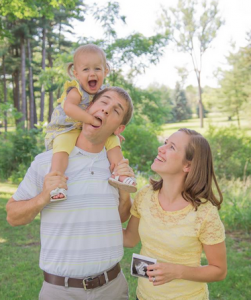by Tony Butler
The following is an excerpt from our Winter 2016 Magazine. To view the whole magazine, click here.
Our mission at Spring Antioch Baptist Church is to help our youth grow into what God wants them to be. We desire for them to first know who God is for themselves. But we also want to show them how to experience God in their everyday lives. Our lessons and our activities are geared to help them see God for who he is.
Through an organization called the Old Town Spring Heights Task Force, which is made up of churches of different faiths, backgrounds and cultures, we met Brandon Bajema of the New life Christian Reformed Church. He told us of an organization called Youth Unlimited that had ministry geared towards growing youth in Christ. At first, I was really skeptical because we had been to conferences before and left them with nothing and felt robbed, but Brandon was persistent in getting our youth to Live It. Eventually, my pastor and I decided it would be a good thing for our youth. We registered and waited in anticipation.
All along the way from Houston to Chicago on our trip to Live It, I looked at the kids and wondered if they will get something from this experience. Would they be challenged to grow on their level of understanding? Would they be ready for such a radical introduction to something this new to them? All kinds of questions ran through my mind, but I realized that it was more of an issue for me than it was for them.
After two days of travel, we arrived at Live It and immediately felt God’s presence. As we exited the van our kids began introducing themselves to every youth in sight. My wife, Vanessa, and I sat back and simply marveled in what we saw. This was just the beginning of what was to come. As we registered, it began to sink in as the spirit of excellence in which Youth Unlimited operated in began to shine through. If there was a problem, it was handled with a smile and heart felt action. My wife and I were blown away yet again.
I’ll be honest; the first night of worship was a little awkward for our youth. They had never had worship that was so free and it took a little getting used to but they caught on. By the end of the service they had their hands raised and were giving praise. This was another milestone accomplished and the bar was set.
The next day was track time. Myself, my wife and two of our youth took the leadership track. We also had one youth in the service track, one in the arts track and two in the athletics track. The leadership track took my mind to another level on the first day. Our teacher and her staff gave us what I didn’t expect. I expected to get a lesson about following certain steps to become a good leader, but we spent the week learning to get ourselves in order, so that we can be effective. Our teacher’s transparency and candor were refreshing. She showed us that you have to be genuine because youth will sniff out a fake in a minute. We were encouraged to learn to spend more time alone with God in order to hear what he has to say for us to do. It was sad to see the end of an experience like this draw near. A class like this has never touched me before. My wife Vanessa was encouraged beyond belief. The two youth, Tony Jr. and Jeremy that were in class with us were changed and I saw the change in them. It was truly awesome.
One of our youth, Michael, who took the arts track, could not believe his experience. He was challenged to stop holding back on his singing for God. He was shy before the class but his newfound confidence changed that.
One of our youth, Leon, who took the service track, had an eye-opening experience. He was shy and really didn’t talk to people he didn’t know. However, from working and reaching out while on work sites, he was changed. He now meets no stranger and is ready for whatever comes his way.
The last two of our youth we brought, Da’Vean and Jade, both took the athletics track. They were not expecting to be challenged in something they were good at, but the challenge was not physical, it was spiritual. It made them see, as believers, there is more to everything we do than what we see.
The biggest plus of the whole experience was the beautiful people we met and still have contact with. The kids made friends they still chat and text with. It was absolutely wonderful to see so many different denominations and ethnic backgrounds coming from different places in Canada and the United States loving God together. We were touched in ways that just blew our minds.
Live it proved it was not just another conference, but a life changing experience. It helps to get you and your youth’s focus towards Jesus, where it should be, which I’ve felt is the missing link in many conferences I have been to. They point to heaven, but not to Christ. I will guarantee that our youth will be attending more Youth Unlimited events because this experience has made a great difference in their lives.

